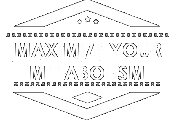“Setting weight loss goals and being persistent leads to getting your dream body. We go over why that is and 5 steps to setting weight loss goals.”
What’s the difference between the person who continually tries to diet (or exercise) and fails versus:
- the individual who steadfastly sticks with his/her program through good times and bad,
- the dieter who carries on despite demoralizing setbacks and temporary defeats and keeps up his efforts through thick and thin?
Is it physical or moral superiority?
Is it finding the “right” diet?
Or is it unflagging support from family and close friends?
Is it luck?
Or is it an unremitting will to win?
While you could argue that all of these qualities are important, most people would agree that there is one trait that propels more dieters into the winners’ circle than all others combined. That quality is persistence.
Persistence suggests a steadfast resolve that refuses to be compromised.
- It indicates a lack of self-pity and self-indulgence.
- And it implies above all else that unyielding “will to win.” Meaning a refusal to surrender despite petty annoyances, major obstacles, and even demoralizing setbacks.
- You can call it tenacity, stamina, guts, or determination.
- This uniquely human trait translates into that enviable quality of hanging on until achieving victory.
Our greatest victories are usually one step past
our biggest failures.
The winners we see and admire in all walks of life have this kind of willpower. And the winners in the dieting game have it, too. They know how to learn from their failures rather than be defeated by them. They then use this new knowledge to reach even higher goals.
Conversely, lack of persistence is a leading cause of failure. Particularly when it comes to making changes in diet or exercise. Sure, there are lots of people out there who want to boost their metabolism and get thin and fit, but not all of them want it badly enough to persist in their efforts. How about you? Are you willing to do what it takes, regardless of all obstacles?
Experience with men and women who have tried to kick their unhealthful habits has demonstrated that lack of persistence is a weakness that is common to the majority.
- They’re ready to give up at the first hint of discomfort or pain.
- They’re easily overcome by delays or setbacks.
Only a precious few carry on, despite all opposition, until they achieve their goals.
Strangely enough, it is precisely at that point that most dieters could win the weight-loss battle. All they need is that little extra push to hang on for a short time longer. This thought was stated so nicely by the Greek historian Polybius:
Some men give up their designs when they have almost reached the goal; while others, on the contrary, obtain a victory by exerting, at the last moment, more vigorous efforts than before.
Those who are persistent when it comes to behavioral changes earn their success at the very point where many other dieters end in failure. History is laced with examples where people have fallen short of their goals only because they failed to hang on.
How To Spot Weak Persistence
Take a look at your own history. You’ll likely see that you’ve been victimized by lack of persistence in many of your previous dieting attempts. This has been the Achilles’ heel of nearly all dieters at one time or another. And it tends to show up in a variety of disguises. Here are just a few:
- Willingness, perhaps even eagerness, to succumb to a temporary dieting slip
- Tendency to blame the diet regimen for your own inability to stick to it
- Fear of meeting head-on those situations which you know present great difficulty
- Inclination to compromise your dieting goals
- Failure in clearly setting weight loss goals (for short- and long-term) and hold yourself accountable for reaching them
- Lack of an organized plan for achieving your dieting goals
Setting Weight Loss Goals Builds Persistence And The Desire To Win
A great example of a situation in life where persistence is essential is parenthood. After all, giving up is not an option when a parent is teaching a child to walk. Now let’s make a similar commitment here:
- From now on, giving up is not an option when attempting to reach your health and fitness goals.
- From now on, you must rank fitness right up there with essential bodily functions such as breathing.
To reach this level of passion, you must have goals that are:
- Perfectly clear and detailed
- Put in writing on some type of a goal chart so you can see where you have to be at every stage of the process
- Part of your everyday routine
The most important aspect of reaching any goal is to work on its achievement, to the best of your ability, each and every day without fail.
Setting Weight Loss Goals Points the Way
Goals are the mental road maps that your mind uses to attain its desired ends. They are the conduits that funnel all of your physical and mental energies toward a single, important, unified purpose.
A wealth of professional research has shown that goal setting helps you focus on the tasks at hand. And, as a result, improves your ability to stick to your behavior-change program.
Writing in the Canadian Journal of Behavioural Science, researchers Pierre Baron and Robert G. Watters reported that dieters who set goals lose much more weight than those who do not. Their findings confirm scores of earlier studies on dieting, exercise, and behavior change. Like, their findings confirmed studies by Robert L. Litrownik of the University of Illinois and H. Jon Geis of the Institute for Rational Living in New York City. They all verify that the ability to stick to your program of change, no matter what its description, is aided considerably by properly setting weight loss goals.
How Setting Weight Loss Goals Builds Your Will to Succeed
Setting weight loss goals builds willpower by working in precisely the same way as “desire-building” exercises. They both rely on the mind’s ability to translate thoughts into concrete things, and ideas into successful reality.
Setting weight loss goals the Maximize Your Metabolism way keeps your new style of living at the forefront of your daily thinking. The result is that you’re constantly reminded in a positive, yet forceful way that sticking to your diet and exercise regimen is your top priority. It’s a daily routine to which you pledge unswerving allegiance.
Your goals become your mental companion as you steadily chip away at those unwanted pounds.
- They measure your successes.
- In effect, they drive you to your achievements.
- And direct your efforts away from past mistakes and false starts.
Setting weight loss goals is the best way to stay motivated.
Goals provide focus for your workout program and clarify what you are trying to achieve. As you attain each goal, you are encouraged by your success, which in turn motivates you to stay the course.
Five Easy Steps To Setting Weight Loss Goals
There are five easy rules for effectively setting weight loss goals. Anyone can do it. You need take only a half-hour or so, do a bit of soul-searching and pencil work, and—voilà!—you’re all set.
Step One.
Fix in your mind the precise goal you wish to reach, and make sure that it’s something that’s both measurable and specific.
A vague goal, such as “I want to be fit,” gives you nothing to shoot for. Decide when and what you are going to achieve, such as:
“I want to reduce my body fat by two percentage points by the 1st of September.”
Take whatever steps are needed to assess your progress. In this example, you need to know your current percentage of body fat. (Get your body fat percentage tested—it shouldn’t cost more than $20 at any good health club). And then monitor it on a weekly basis thereafter.
But beware of a common mistake!
Don’t get caught in the trap of setting a goal for one thing when what you really want is something else. Many overweight people claim that they’re dieting because they want to “get thin,” even though their real goal is (or perhaps should be!) not simply to get thin but to stay thin. This is sort of like stating that your goal is to climb Mt. Everest when what you’re actually aiming for is to build a six-room condo once you get to the top.
Strategies for losing weight necessarily involve making changes in behavior. So be as specific as possible about the extent to which you’re willing to change your behavior. The last thing you want is to achieve your ideal weight only to complain later that the weight has come back. It would be much better to set a goal of reaching a certain weight and remaining there (within 2 to 4 pounds) for good.
When setting weight loss goals, make sure that your goals are realistic and attainable.
If you set your expectations too high, you will get frustrated and will be more likely to quit. On the other hand, your goals should not be too easy; they should be challenging.
When you achieve a challenging goal, your pride and satisfaction will engender in you a greater degree of motivation to take the next step.
Make your goals lofty enough to force you to venture beyond your comfort zone, but not so far from your current circumstances that they seem unrealistic or even impossible to you.
Put simply, set each of your goals at an appropriate level right at the outset.
- If you want to lose:
- 15 pounds, say so.
- 40 pounds and remain at 110 for the rest of your life, admit it and be proud.
- 20 pounds and eat nutritionally better meals, let that be your decision.
- But above all, be specific. Tell your subconscious exactly what you want, and your subconscious will find a way to make it happen.
Once you’re done setting weight loss goals, don’t share them with anyone for at least the first thirty days.
That will give the goals enough time to sink deep into your subconscious mind. And they’ll become part of your everyday life, a habit. After that, share your goals only with those people who you know will be encouraging to you and helpful in your pursuit.
Get emotional when setting weight loss goals. Make sure your goals become such a burning desire that it drives you hard enough to fend off any negative feedback, from yourself or others, with virtually no effort on your part.
Step Two.
Determine exactly how you are going to achieve your goal.
This step of the goal-setting process calls for some planning on your part, since you’ve got to know how the Maximize Your Metabolism program will play out in your life.
Set short-term goals as stepping stones to your ultimate (long-term) goals.
If your long-term goal is to be able to bench press 200 pounds within a year’s time, set short-term (weekly or monthly) goals for the weight you will need to be able to bench press at each stage in order to achieve your long-term goal. In other words, develop a plan.
It’s a lot easier to limit yourself to thinking about accomplishing your goal just a little at a time, such as increasing your bench press by 2.5 or 5 pounds a week, than to have the specter of the whole thing (such as increasing your bench press by 50 pounds) hanging over your head.
One problem is that many would-be behavior-changers let other people think and plan for them.
They believe they’re actually doing their own thinking and planning. But they end up turning their problems over to others in the hope that someone else might solve them. Then they readily accept the opinions and decisions of others. Ralph Waldo Emerson noted this when he said, “Our chief want in life is somebody who will make us do what we can.”
Step Three.
Select a timetable for the attainment of your goal.
Predicting the rate at which weight loss will occur, through caloric restriction and increased physical activity, will take some calculation and some imagination on your part.
Without a timetable to plot your course, it will be difficult to make firm connections between the fading past and the unseen future. To make this association more explicit, keep a logbook of your dieting progress.
- Although these dieting diaries are sometimes viewed as tedious, pencil-pushing exercises, they’re quite valuable.
- They’re valuable for charting progress and also for reviving spirits that flag and re-energizing motivation that founders.
- Besides, it’s fun—perhaps even educational—to read them in later months or years.
Another way to track your progress is to get a piece of poster board and tack it lengthwise to a wall that only you will see.
- Draw a horizontal line across the center of the poster.
- And write your present weight at the far left side of the line and your goal weight at the far right side.
- Make tick marks on the line to indicate the weeks or months when you’ll be “weighing in” or otherwise checking your progress.
- This will serve as a timeline, which you can use to visually track where you are now and where you should be at the end of each week or month of your journey.
Your weekly weigh-ins will keep you aware of your progress. Based upon the degree of your intermediate successes, you can either reward yourself or adopt whatever self-correcting behavior you need in order to achieve your goal on schedule.
Step Four.
Decide what you’ll do to prevent relapses in your program—and to meet them head-on if they occur.
To accomplish this step, you’ll need to deliberate and make contracts with yourself. Much of what you have done in your dieting past has been correct. Repeating your past dieting successes will bring you even closer to victory this time.
But what about those areas in which you’ve had problems?
- Do you find it hard to stick to a diet during holiday entertaining?
- Are you particularly vulnerable to dieting failure when you eat in a restaurant?
- Have you stumbled and fallen on your road to a fitter, leaner body as the result of a temporary personal problem (depression, anxiety, anger, etc.)?
Whatever the problem, you’ve got to pre-plan a solution for it, just in case it arises in your dieting life again. What will you do differently this time? Make a note of that action, and include it in your goal statement when you’re setting weight loss goals.
What I’ve found to be most effective is a process for enumerating all the foreseeable challenges that may arise and for deciding in advance how to handle them if they do.
I originally developed this process for my clients, but I’ve used it in running my business as well. Here’s how it works:
- Go to any office-supply store and get a three-ring binder and a stack of plain, white, three-hole-punched paper.
- Using a separate sheet of paper for every challenge you think you may encounter on your way to reaching your goal, write out the challenge at the top.
- Below that, list all the undesirable consequences of failing to meet this challenge.
- Finally, write out the best, step-by-step approach you can think of to avoid encountering with this challenge in the first place (or to deal with it effectively if it does present itself and you happen to succumb to it).
Here’s an example of what a challenge sheet might consist of.

Step Five.
The fifth and final step is to write a clear, concise success statement.
Then, once you’ve written it, read it aloud to yourself three or more times each day, including once just after waking up in the morning and once right before going to bed at night.
As you read your success statement, see, feel, and believe you have already reached your weight-loss goal, visualizing yourself from head to toe in top shape and full of energy, mentally and physically. Read the statement with feeling, and feel great when you say it.
Here’s an example of what a goal statement might look like:
I weigh 135 [or your goal weight], and I look and feel great. I love showing off my tight body. People congratulate me daily on my achievement. I reached my goal by following every step of the Maximize Your Metabolism program.
Read this statement out loud to yourself at least three times a day. Memorize it. This is one of the most important psychological tools you can use to train your subconscious mind to help you reach your goals.
The Magic of Autosuggestion
What you are practicing in this part of our goal-setting article is the principle of autosuggestion, your direct link of communication with your subconscious. Here’s how it works:
- Your subconscious mind is always open and drinking in any and all stimuli from your surroundings.
- For example, your subconscious knows the exact color of the tree you pass after you make that right-hand turn just before pulling into the parking lot at your place of work.
- Your conscious mind may never have picked that up, but your subconscious mind picks up and stores everything.
- Just as easily as it picks up useless information, such as the color of that tree, it also stores everything you think about and everything you hear.
This is good news, for if your subconscious mind is open to everything you think and you can implant anything you want into it, then you can limit yourself to thinking positive thoughts and allow your subconscious mind to bring positive things into your life.
Now this website isn’t an instructional guide to training your subconscious mind, but if you follow the basics outlined in the website you’ll actually train your subconscious mind for success. And a trained subconscious mind is a powerful asset when it comes to gaining control of your metabolism and your health.
Each time you read your success statement, you are sending subliminal suggestions to your subconscious, suggestions which it must eventually heed.
The more often you repeat your affirmation in a positive, emotional state, the faster it will sink into your subconscious. And remember:
- your subconscious mind reacts best to these suggestions when they are drenched in desire-supporting emotions and any other imagery from the five senses that you can provide.
One secret to really accelerating your progress is to take a large piece of poster board and make a collage of what your goal body looks like.
- One way to do this is to go through as many magazines as you can get your hands on and cut out pictures of bodies that look just as yours will look once you reach your goal.
- Paste them all on this poster board.
- Then paste on pictures of entire bodies, as well as pictures of body parts such as a tight stomach or a great lower body.
- Paste on pictures of people who look great in street clothes or in a bathing suit.
- Paste on pictures of people who are enjoying life in their strong, healthy body.
- Then put this poster where you can see it on a daily basis, and keep adding to it.
- Above all, have fun with this exercise.
Take-Away Point
Properly setting weight loss goals and then staying persistent is key to successfully getting your dream body.
Now, let’s take your goal attainment to another level. Let’s fire up your inner desire, so that you’re completely driven to lose weight and get your dream body. >> Next Page (Need To Lose Weight)






